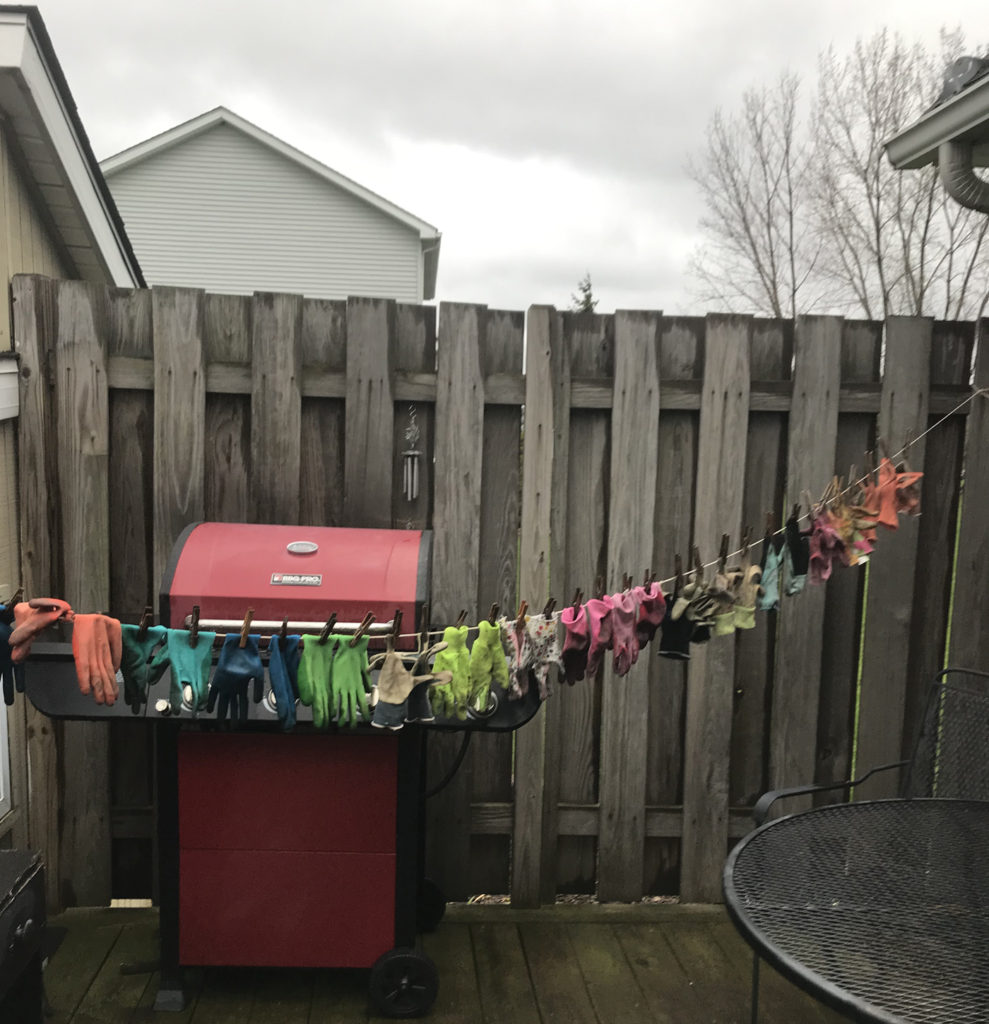This blog is way more about love than knowledge. I make no claim to expertise. But, rest assured, expert counsel is available. The David Austin rose catalogue positively blossoms with advice. There’s Texas A & M University. Wonderful books teach rose care, such as Everyday Roses, by Paul Zimmerman (Tauntun Press). And if you really want confidence as you grab your shovel, watch Renee from Palatine Roses in Niagara-on-the-Lake, Ontario, Canada. Charming.
Every hint of spring finds me reaching for the secateurs, ready to trim the dead from the rose bushes, antsy to help the beauties out. Except that the Cornell University Checklist for Rose Care advises that May is the magic month for pruning in WNY. And then there’s the tried and true proverb: “When the neighbor’s forsythia starts to bloom, that is when it’s time to prune.”
While I wait, I can feed the roses. There are two parts to feeding – healthy soil and healthy plants. Healthy plants need healthy soil, so feed the dirt first. For struggling roses, you can auger out foot-deep narrow holes here and there, fill them with worm castings or good compost (not fresh manure, and not sterile chemicals either), and water in. To keep soil healthy each year, cover the bed with a layer of compost, lightly turned in a few inches and watered, then a layer of mulch. I’ve made quite an investment in a cattle farm down the road, buying his old compost. I lay a few inches of the wonderful stuff down with the first feeding, prune, and then lay down mulch.
Healthy plants need least two feedings. When? Most of our roses flush twice, spring and late summer. So I want to feed twice. But obviously not at a time when they’ll bloom and freeze. Dave’s Garden freeze-frost calendar predicts that our zip code is frost-free from May 4 thru Oct 10. So I need to hold off the spring feeding until one month before last frost, and then feed only IF the leaves are truly out. That means I can start to watch for leaf sets first week in April. As soon as they’re out, I can sprinkle the first feed and lay down the compost. The second granular feeding will be in fall four weeks before first frost (September 10 here). But the old roses that only bloom once only want a spring feed.
And what to feed? Time-release, long-term fertilizers that sprinkle into the ground – I’d argue for organic but chemical is fine. It’s the three numbers of fertilizer that matter. They indicate Nitrogen – Phosphorus – Potassium (NPK). Nitrogen encourages growth, so a higher first number in spring to boost growth. Phosphorus feeds the roots. Potassium helps strengthen the plant, so choosing a higher third number in fall helps prepare the roses for winter. Don’t get bogged down with numbers though, just feed the roses.
Then monthly, add a foliar liquid feed. Seaweed-based liquid helps resist disease, such as mildew or black spot. Years ago I read advice from the gardener of the most amazing rose garden, Carolside, to spray before blackspot appears. So hit it in May, then again in June and July. Come August, when it’s really hot, let the poor things rest. I mean the roses, well OK, the gardener too. They’re gonna get another sprinkling of NPK early September anyway, and that’s it for the year.
I’d love tell you we have a natural predatory environment here that keeps insects in check. The reality is, I can’t stand watching aphids eat all those buds. My garden glove fingers are green from pulling them off, and sometimes I have green fingertips. But also, Neem oil spray is supposed to work, at dawn or dusk (when pollinators aren’t at work). Happily, our rose gardens are far away from the raspberries that swarm with bees. And I refuse to spray when the sun is out and bees hover and hum over the lavender. Sadly though, in August, when it seems nothing stops the aphids, I have attacked with chemicals. Not happy with myself for that. Hopefully this is a completely organic year for our rose gardens.
A word about pruning. Slap my hands if those secateurs come out before the forsythia. A couple of things that can work: Stay busy cleaning the tools, alcohol is great for this. When all else fails, there are the garden gloves, needing washed, while you wait.

And when the forsythia finally turns gold, here are three simple rules for pruning rose bushes: 1. Dead canes out at base. 2. Leave at least 4-5 non-twiggy canes, thick as pencils. 3. Trim the height near knee-level. That’s it. But when it comes to climbing roses, to be honest I have no idea. Everybody who grows roses says you need a main cane, but beyond that, it all looks like a gamble to me. I’m pretty sure this year there won’t be time to prune the climbers. Phew, that’s a relief.
On one thing I am an expert, or, maybe more like addicted: Flexi Tie. It’s popular in UK but only a few places carry it here, and it’s positively fabulous for controlling anything that climbs.
All in all, the most important thing in rose care is this: “Stop and smell the roses.” Focus is important too. Focus on the beauty, not the thorns. Hey, that’s good advice for life! And, by the way, if you need some roses to smell, do stop by.
Leave a Reply